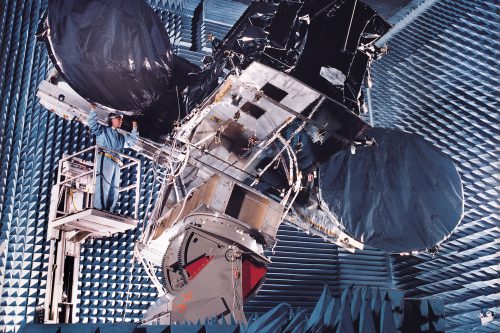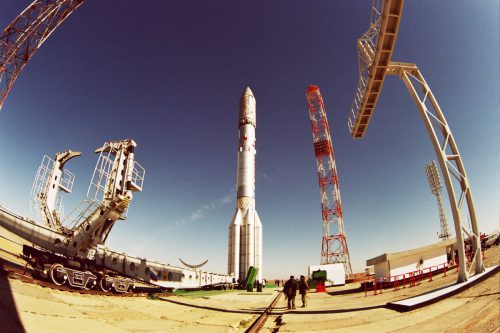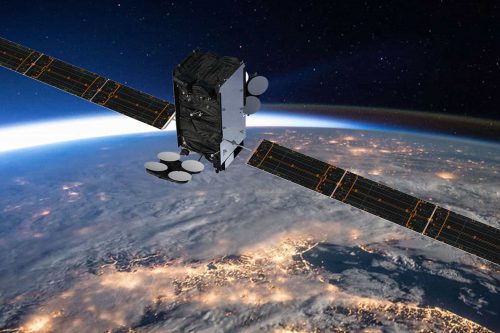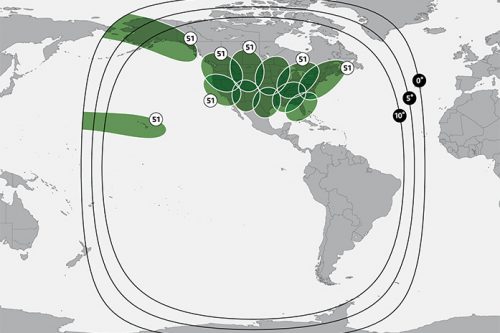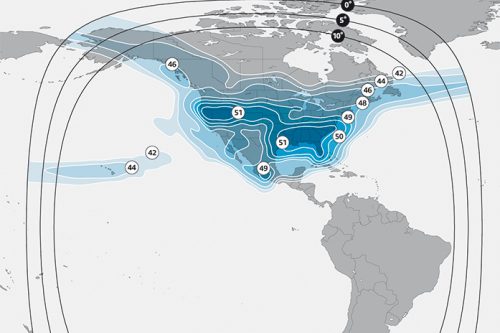
Back to selection
GEO Satellite
AMC-16 (GE-16) GEO
succesfull
Launch date
17 December 2004
Dedicated Mission
Country

Purpose
Communication
Position
85° West
Manufacturer
Operator
Launch operator
Launch vehicle
Atlas V
Expected lifetime
15 Years
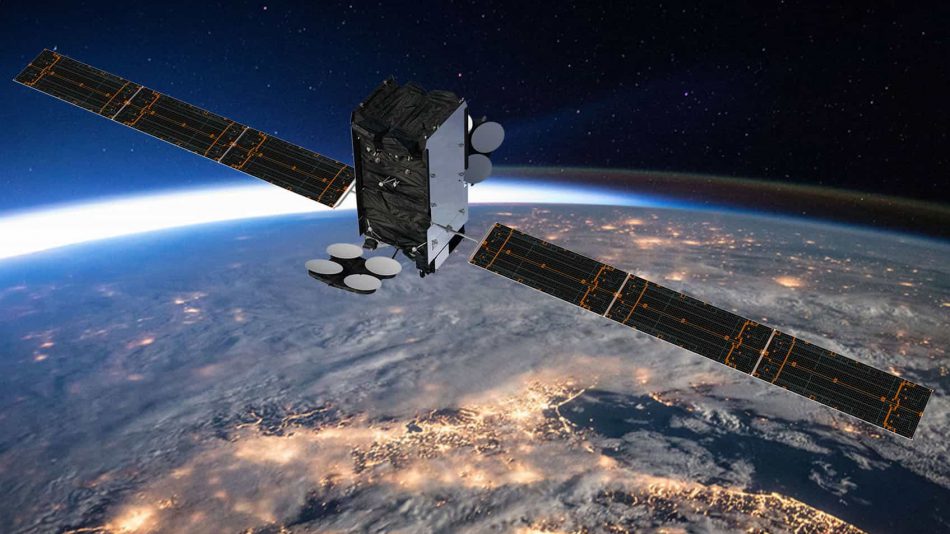
Region
North America Region
In 2002 GE Americom ordered two communications satellites with Lockheed Martin Commercial Space Systems, GE-15 and GE-16. The satellites were based on Lockheed Martin’s A2100 satellite bus.
GE-15 carries both Ka- and Ku-band payload, featuring 24 Ku-band 36Mhz transponders and 12 intermediate frequency (IF) processed Ka-band spot beams which will be deployed in a pattern taking advantage of frequency re-use while eliminating interference between and among the beams. The satellite became operational in late 2004.
GE-16 was developed as an identical ground spare. The new hybrid Ku/Ka-band spacecraft expanded GE Amercom’s fleet of satellites, which provided global distribution of cable, broadcast television and radio, telecommunications services, business television and broadband data.
In 2001 General Electric’s GE Americom Communications was acquired by SES from Luxembourg, making SES the world’s biggest satellite service provider. After the acquisition GE Americom was renamed SES Americom and later SES World Skies, and resulted also in renaming the satellite assets, GE-15 became AMC-15 and GE-16 was renamed AMC-16. Both satellites were completely leased to satellite operator EchoStar, for it’s DISH Network direct-to-home service.
GE-16 (AMC-16) was launched on December 17th, 2004, on a Proton M booster rocket operated by launch operator ILS from the Baikonur Cosmodrome launch site in Kazachstan.
GEO Satellite
AMC-16 (GE-16)
succesfull
GEO Satellite
AMC-16 (GE-16)
succesfull
